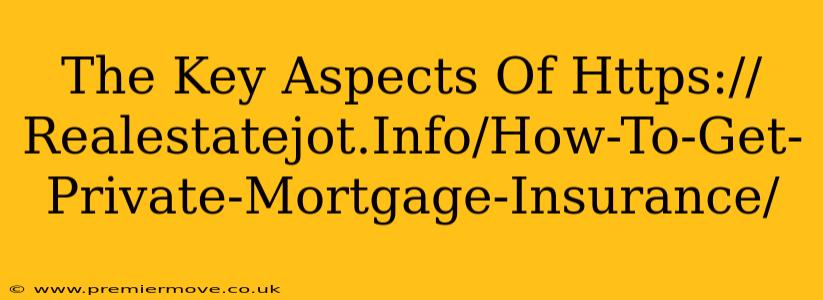Getting a mortgage can feel like navigating a maze, and Private Mortgage Insurance (PMI) is often one of the more confusing aspects. This post breaks down the key elements of PMI, helping you understand when you need it, how it works, and how you might be able to get rid of it.
What is Private Mortgage Insurance?
Simply put, PMI is insurance that protects lenders if you default on your mortgage. It's typically required if you put down less than 20% of the home's purchase price. This is because lenders see a higher risk of loss when borrowers have a larger loan-to-value ratio (LTV). Think of it as a safety net for the lender, not you. While you pay the premiums, you don't directly benefit from a payout unless your loan is assumed.
Who Needs PMI?
Most lenders will require PMI if your down payment is less than 20%. This applies to conventional loans, which aren't backed by government agencies like FHA or VA loans. However, there are exceptions. Some lenders may offer programs with alternative requirements.
How Does PMI Work?
PMI is usually paid monthly as part of your mortgage payment. The cost varies depending on factors like your credit score, the loan amount, and the type of loan. A higher credit score typically translates to lower PMI premiums. The insurance protects the lender against losses in case you stop making your mortgage payments. If that happens, the insurance company covers a portion of the lender’s losses.
Understanding Your PMI Costs
The cost of PMI can significantly impact your monthly mortgage payments. It's crucial to factor this expense into your overall budget when planning a home purchase. Several online calculators can estimate your PMI costs based on your loan amount, credit score, and down payment. It's wise to shop around and compare quotes from multiple lenders to find the best rates.
How to Remove PMI
One of the most frequently asked questions is: "How do I get rid of PMI?" The good news is, you can usually cancel your PMI once your home equity reaches 20% of the original purchase price. This typically happens through paying down your mortgage principal. You can request a PMI removal from your lender once you've reached the 20% equity threshold. Your lender will then appraise your home to verify the equity. Keep in mind that some lenders may have slightly different requirements.
Alternatives to PMI
While PMI is common, there are alternatives to consider, depending on your circumstances. These alternatives might include FHA loans, which require mortgage insurance, but with different rules and premiums, or VA loans, for eligible veterans, which generally don’t require PMI.
It's essential to discuss all your options with a mortgage lender to determine the best fit for your financial situation. They can explain the pros and cons of each option and help you choose the most suitable path.
Key Takeaways
- PMI protects lenders, not borrowers, against loan defaults.
- A down payment of less than 20% usually requires PMI.
- PMI premiums are typically paid monthly.
- You can usually remove PMI once you reach 20% equity.
- Explore alternatives like FHA or VA loans if PMI isn't ideal for you.
By understanding these key aspects of PMI, you can make informed decisions and navigate the mortgage process with greater confidence. Remember to always seek professional advice from a qualified mortgage lender or financial advisor.

